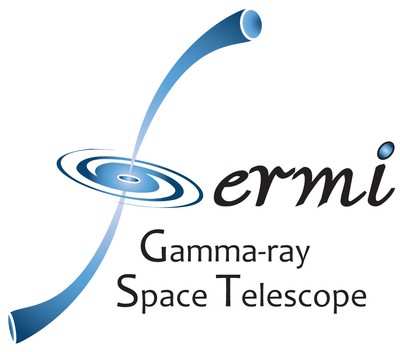Particles Form In The "Gamma-Ray Flash" Associated With
Lightning
Scientists using NASA's Fermi Gamma-ray Space Telescope have
detected beams of antimatter produced above thunderstorms on Earth,
a phenomenon never seen before. Scientists think the antimatter
particles were formed in a terrestrial gamma-ray flash (TGF), a
brief burst produced inside thunderstorms and shown to be
associated with lightning. It is estimated that about 500 TGFs
occur daily worldwide, but most go undetected.

NASA Image
"These signals are the first direct evidence that thunderstorms
make antimatter particle beams," said Michael Briggs, a member of
Fermi's Gamma-ray Burst Monitor (GBM) team at the University of
Alabama in Huntsville (UAH). He presented the findings Monday,
during a news briefing at the American Astronomical Society meeting
in Seattle.
Fermi is designed to monitor gamma rays, the highest energy form
of light. When antimatter striking Fermi collides with a particle
of normal matter, both particles immediately are annihilated and
transformed into gamma rays. The GBM has detected gamma rays with
energies of 511,000 electron volts, a signal indicating an electron
has met its antimatter counterpart, a positron.
Although Fermi's GBM is designed to observe high-energy events
in the universe, it's also providing valuable insights into this
strange phenomenon. The GBM constantly monitors the entire
celestial sky above and the Earth below. The GBM team has
identified 130 TGFs since Fermi's launch in 2008. "In orbit for
less than three years, the Fermi mission has proven to be an
amazing tool to probe the universe. Now we learn that it can
discover mysteries much, much closer to home," said Ilana Harrus,
Fermi program scientist at NASA Headquarters in Washington.
The spacecraft was located immediately above a thunderstorm for
most of the observed TGFs, but in four cases, storms were far from
Fermi. In addition, lightning-generated radio signals detected by a
global monitoring network indicated the only lightning at the time
was hundreds or more miles away. During one TGF, which occurred on
Dec. 14, 2009, Fermi was located over Egypt. But the active storm
was in Zambia, some 2,800 miles to the south. The distant storm was
below Fermi's horizon, so any gamma rays it produced could not have
been detected. "Even though Fermi couldn't see the storm, the
spacecraft nevertheless was magnetically connected to it," said
Joseph Dwyer at the Florida Institute of Technology in Melbourne,
Fla. "The TGF produced high-speed electrons and positrons, which
then rode up Earth's magnetic field to strike the spacecraft."

The beam continued past Fermi, reached a location, known as a
mirror point, where its motion was reversed, and then hit the
spacecraft a second time just 23 milliseconds later. Each time,
positrons in the beam collided with electrons in the spacecraft.
The particles annihilated each other, emitting gamma rays detected
by Fermi's GBM.
Scientists long have suspected TGFs arise from the strong
electric fields near the tops of thunderstorms. Under the right
conditions, they say, the field becomes strong enough that it
drives an upward avalanche of electrons. Reaching speeds nearly as
fast as light, the high-energy electrons give off gamma rays when
they're deflected by air molecules. Normally, these gamma rays are
detected as a TGF. But the cascading electrons produce so many
gamma rays that they blast electrons and positrons clear out of the
atmosphere. This happens when the gamma-ray energy transforms into
a pair of particles: an electron and a positron. It's these
particles that reach Fermi's orbit. The detection of positrons
shows many high-energy particles are being ejected from the
atmosphere. In fact, scientists now think that all TGFs emit
electron/positron beams. A paper on the findings has been accepted
for publication in Geophysical Research Letters. "The Fermi results
put us a step closer to understanding how TGFs work," said Steven
Cummer at Duke University. "We still have to figure out what is
special about these storms and the precise role lightning plays in
the process."
NASA's Fermi Gamma-ray Space Telescope is an astrophysics and
particle physics partnership. It is managed by NASA's Goddard Space
Flight Center in Greenbelt, Md. It was developed in collaboration
with the U.S. Department of Energy, with important contributions
from academic institutions and partners in France, Germany, Italy,
Japan, Sweden and the United States.
 ANN's Daily Aero-Term (04.24.24): Runway Lead-in Light System
ANN's Daily Aero-Term (04.24.24): Runway Lead-in Light System ANN's Daily Aero-Linx (04.24.24)
ANN's Daily Aero-Linx (04.24.24) Aero-FAQ: Dave Juwel's Aviation Marketing Stories -- ITBOA BNITBOB
Aero-FAQ: Dave Juwel's Aviation Marketing Stories -- ITBOA BNITBOB Classic Aero-TV: Best Seat in The House -- 'Inside' The AeroShell Aerobatic Team
Classic Aero-TV: Best Seat in The House -- 'Inside' The AeroShell Aerobatic Team Airborne Affordable Flyers 04.18.24: CarbonCub UL, Fisher, Affordable Flyer Expo
Airborne Affordable Flyers 04.18.24: CarbonCub UL, Fisher, Affordable Flyer Expo




